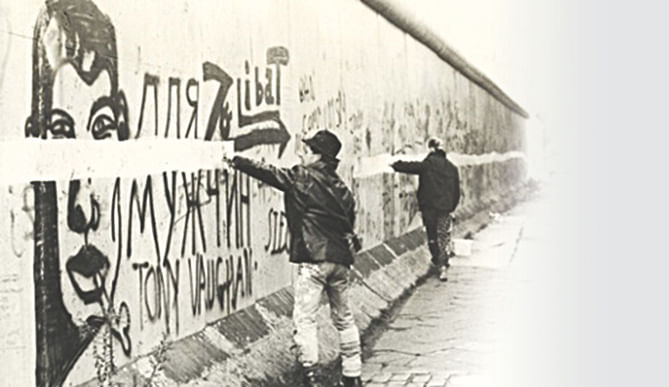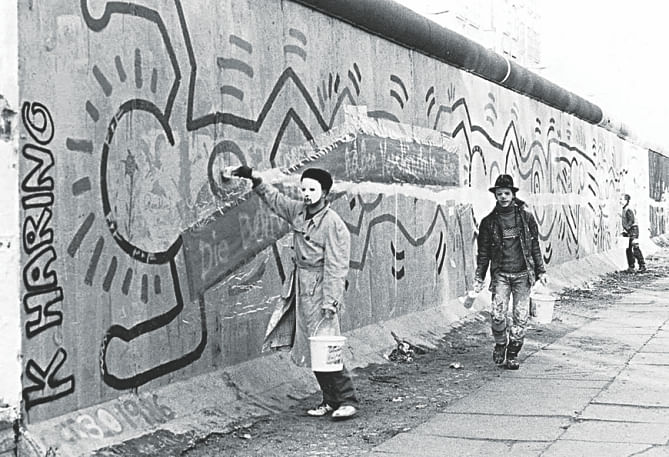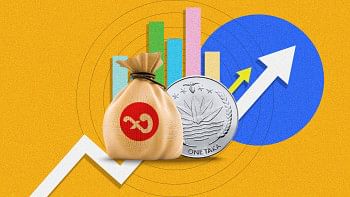The White Line

November 3, 1986. A group of five masked men drew a white line on the Berlin wall. Starting at Mariannenplatz, the line was heading west via the Checkpoint Charlie border crossing in the city centre.
After around 5km, the line suddenly stopped. At 11:30am next day, border guards from the eastern side of the wall had ambushed the line-painters and put an end to their project.
The wall collapsed almost exactly three years later.
All five of the wall-painters had been born in the east, in Weimar, but had begun to rebel against the communist regime's social norms in their late teens. Frank Willmann read Nietzsche and Solzhenitsyn, his friend Frank Schuster wore sandals and string vests. Wolfram Hasch grew his hair long. Jürgen Onisseit played in a punk band called Creepers. Thomas, his younger brother, was arrested for spraying dadaesque slogans such as Macht aus dem Staat Gurkensalat (“Turn the state into cucumber salad”) on to walls around Weimar.
The regime's tolerance for alternative lifestyles was low. Between 1983 and 1985, after a series of run-ins with the authorities, the five friends were all granted permission to resettle in the west and moved to Berlin.

For Willmann, now a journalist and author, the line was, above all, an artistic statement, a protest against what other artists were doing with the wall.
For Thomas Onisseit, who is now a graphic designer and lives in Dresden, the line was political rather than artistic. For Schuster, the line was political, too, but more of a protest against the complacency of the west.
All of them agree that it was the older Onisseit brother, Jürgen, who first had the idea. He painted a manifesto on the wall next to the start of the line: “This line will demarcate the Berlin area anew and reveal the wall as a ghetto wall. Its beginning and end is here.”
In 2010, Willmann started ordering up documents from the Stasi archive. He found the white line had yet another meaning for the leader of their group.
Between 1981 and 1985, Jürgen Onisseit had worked as an “unofficial collaborator” for the secret police. By naming a group of people involved in the “Turn the state into cucumber salad” stunt, he had indirectly brought about his younger brother's imprisonment.
In a documentary titled “Drawing a Line”, the older brother is asked if he regrets betraying his friends. “I don't have friends,” Jürgen says.
The white line on the Berlin Wall had one other meaning. On the eastern side, border guards used white paint to reiterate the “anti-fascist barrier” against the west. When the five masked men with the buckets of white paint were first spotted on the morning of November 3, it seemed obvious to them that the white line was no art project or political protest, but the state enemy in disguise, attempting to redraw the physical border between east and west.
As a consequence, border guards were ordered to slip through a hidden door in the Berlin Wall the next morning and ambush the painters. Four of the friends escaped.
But Wolfram Hasch was seized and pulled back into the east, where he remained in prison for three months before being released back to the west.
He no longer wants to talk about the white line.

 For all latest news, follow The Daily Star's Google News channel.
For all latest news, follow The Daily Star's Google News channel. 



Comments